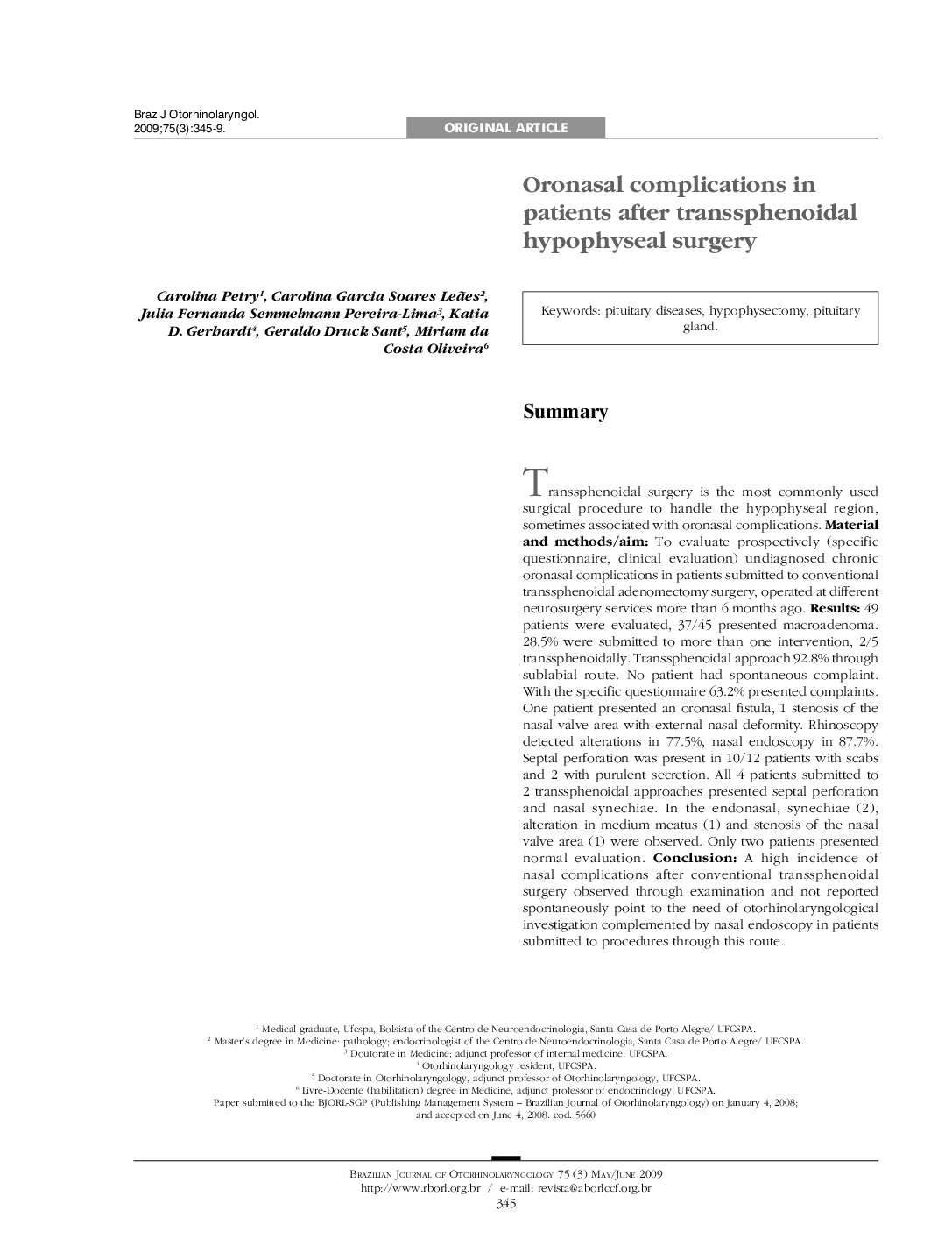| Article ID | Journal | Published Year | Pages | File Type |
|---|---|---|---|---|
| 4107101 | Brazilian Journal of Otorhinolaryngology | 2009 | 5 Pages |
SummaryTranssphenoidal surgery is the most commonly used surgical procedure to handle the hypophyseal region, sometimes associated with oronasal complications.Material and methods/aimTo evaluate prospectively (specific questionnaire, clinical evaluation) undiagnosed chronic oronasal complications in patients submitted to conventional transsphenoidal adenomectomy surgery, operated at different neurosurgery services more than 6 months ago.Results49 patients were evaluated, 37/45 presented macroadenoma. 28,5% were submitted to more than one intervention, 2/5 transsphenoidally. Transsphenoidal approach 92.8% through sublabial route. No patient had spontaneous complaint. With the specific questionnaire 63.2% presented complaints. One patient presented an oronasal fistula, 1 stenosis of the nasal valve area with external nasal deformity. Rhinoscopy detected alterations in 77.5%, nasal endoscopy in 87.7%. Septal perforation was present in 10/12 patients with scabs and 2 with purulent secretion. All 4 patients submitted to 2 transsphenoidal approaches presented septal perforation and nasal synechiae. In the endonasal, synechiae (2), alteration in medium meatus (1) and stenosis of the nasal valve area (1) were observed. Only two patients presented normal evaluation.ConclusionA high incidence of nasal complications after conventional transsphenoidal surgery observed through examination and not reported spontaneously point to the need of otorhinolaryngological investigation complemented by nasal endoscopy in patients submitted to procedures through this route.
